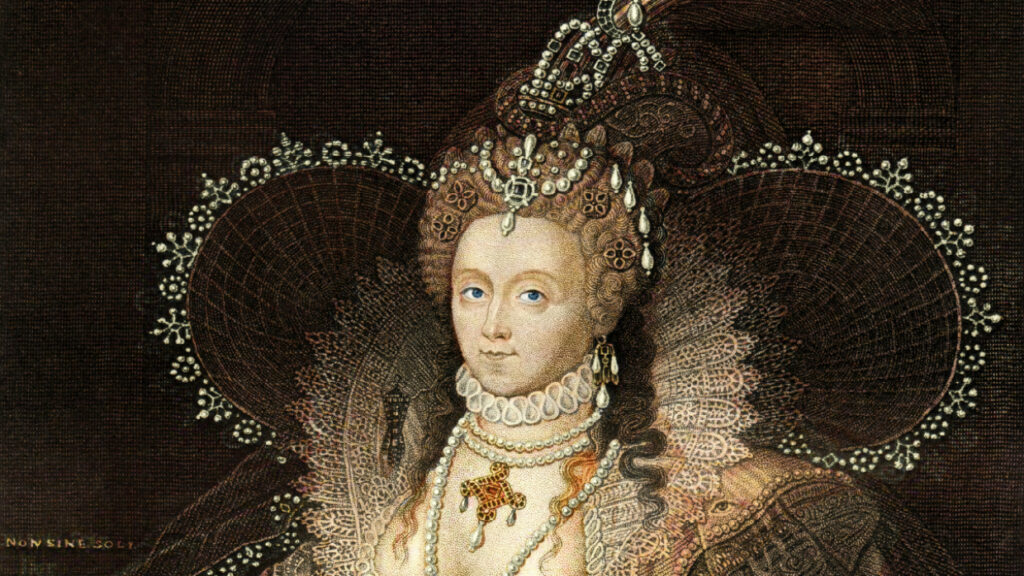In the third of a series of guides looking at what leaders from history can teach us about leadership, Paul Russell looks at Elizabeth I.
When considering the broad remit of a leader, managing personal image can often be the middle child, a little forgotten with concerns of the first born and youngest demanding attention. With their known ability to combust at any time, leaders don’t like to ignore the first born, aka strategy, or the youngest, fondly known as conflict. Yet in its own way, image management can be as important as either strategy, conflict management or their close cousins change management and team development. One historical leader that understood this was Elizabeth I, Queen from 17th November 1558 until her death in 1603, the third of Henry VIII’s children to rule, and the most successful. Elizabeth’s development and management of her image throughout her reign undoubtedly contributed to both her popularity and her longevity; today we consider what Elizabeth can teach us about leadership through image creation.
In the 21st century, leadership and image are inseparable, indeed the latter often predicts the success of the former. Consider for example recent political elections whereby the vote of the average person on the street is dictated as much (if not more) by how likeable they find the leader rather than the leader’s policies. Then look to high profile business leaders whose image is inextricably tied to the brand: they are the embodiment of the brand values, the face. This type of leader, who is very much in the public eye, utilises their image to give strength to the brand and to bring it to life, or in the case of their departure, snatch it away. Your image as a leader communicates on your behalf – it can precede you, introduce you and pave the way.
It is said that Elizabeth was a prevaricator, when it came to marriage as much as to strategic concerns, eliciting the advice of many and weighing up decisions over a protracted period of time. Whilst critics at the time may have blamed this procrastination upon her gender, seeing it as a character flaw, Elizabeth could have been using this as an approach to manage her image. Elizabeth, having felt the effects of her father’s tyranny (the beheading of her mother Anne Boleyn for alleged witchcraft being one such incident) would almost certainly have wanted to assert herself as a more considered leader, and, importantly, to be perceived to be considered. Elizabeth’s willingness to see different points of view, and contemplate different proposals and arguments could have been a strategy to be seen as a flexible, compassionate leader. Her father may have agonised endlessly about the death of Anne Boleyn, but if these deliberations were internalised, ramifications upon image were inevitable. Modern leaders will also have to make difficult decisions; job cuts, changes in strategic direction, altering job roles and it is important that followers appreciate that there is heart, as well as brain, behind decisions.
Another area in which Elizabeth excelled was in acting the part of the leader, making regular splendid ‘progresses’ through the country to see and be seen by everyone from peasants to nobility. Studies today link job satisfaction of followers to a compatibility of expected image and perceived image; employees might expect a leader to exhibit certain characteristics, assurance and poise for example, but if they experience a leader that does not show these qualities, they can become confused and dissatisfied. Elizabeth I evidently understood this premise and used it to her advantage, showing herself to be the type of leader that all sectors of society expected.
A further benefit of Elizabeth’s annual progresses (it is said that she completed around 25) came in face-to-face interaction with her subjects. Had Elizabeth kept herself locked away safely in her residences of Windsor Castle or Hampton Court, her subjects would not have had the opportunity to develop a favourable impression of her, to respect and admire her, to develop loyalty. For the modern leader this is equally important: ensure that you always remain accessible to your followers; appreciate that much can be done over email but that face-to-face interactions are essential to develop a favourable image.
Perhaps, as she watched from afar, the young Elizabeth assessed her father’s leadership and determined that she would do differently. Indeed, Elizabeth was able to take the best parts, the Tudor pageantry and the need to project a strong image, but blend it with consideration and an affinity for her subjects. As Elizabeth understood, image isn’t something to be trifled with, forgotten or mismanaged; it can be the difference between success and longevity as a leader and abject failure.
Paul Russell is co-founder and director of Luxury Academy London, www.luxuryacademy.co.uk, a multi-national private training company with offices in London, Delhi and Vishakhapatnam. Luxury Academy London specialise in leadership, communication and business etiquette training for companies and private clients across a wide range of sectors.
In the third of a series of guides looking at what leaders from history can teach us about leadership, Paul Russell looks at Elizabeth I.
When considering the broad remit of a leader, managing personal image can often be the middle child, a little forgotten with concerns of the first born and youngest demanding attention. With their known ability to combust at any time, leaders don’t like to ignore the first born, aka strategy, or the youngest, fondly known as conflict. Yet in its own way, image management can be as important as either strategy, conflict management or their close cousins change management and team development. One historical leader that understood this was Elizabeth I, Queen from 17th November 1558 until her death in 1603, the third of Henry VIII’s children to rule, and the most successful. Elizabeth’s development and management of her image throughout her reign undoubtedly contributed to both her popularity and her longevity; today we consider what Elizabeth can teach us about leadership through image creation.
In the 21st century, leadership and image are inseparable, indeed the latter often predicts the success of the former. Consider for example recent political elections whereby the vote of the average person on the street is dictated as much (if not more) by how likeable they find the leader rather than the leader’s policies. Then look to high profile business leaders whose image is inextricably tied to the brand: they are the embodiment of the brand values, the face. This type of leader, who is very much in the public eye, utilises their image to give strength to the brand and to bring it to life, or in the case of their departure, snatch it away. Your image as a leader communicates on your behalf - it can precede you, introduce you and pave the way.
It is said that Elizabeth was a prevaricator, when it came to marriage as much as to strategic concerns, eliciting the advice of many and weighing up decisions over a protracted period of time. Whilst critics at the time may have blamed this procrastination upon her gender, seeing it as a character flaw, Elizabeth could have been using this as an approach to manage her image. Elizabeth, having felt the effects of her father’s tyranny (the beheading of her mother Anne Boleyn for alleged witchcraft being one such incident) would almost certainly have wanted to assert herself as a more considered leader, and, importantly, to be perceived to be considered. Elizabeth’s willingness to see different points of view, and contemplate different proposals and arguments could have been a strategy to be seen as a flexible, compassionate leader. Her father may have agonised endlessly about the death of Anne Boleyn, but if these deliberations were internalised, ramifications upon image were inevitable. Modern leaders will also have to make difficult decisions; job cuts, changes in strategic direction, altering job roles and it is important that followers appreciate that there is heart, as well as brain, behind decisions.
Another area in which Elizabeth excelled was in acting the part of the leader, making regular splendid 'progresses' through the country to see and be seen by everyone from peasants to nobility. Studies today link job satisfaction of followers to a compatibility of expected image and perceived image; employees might expect a leader to exhibit certain characteristics, assurance and poise for example, but if they experience a leader that does not show these qualities, they can become confused and dissatisfied. Elizabeth I evidently understood this premise and used it to her advantage, showing herself to be the type of leader that all sectors of society expected.
A further benefit of Elizabeth’s annual progresses (it is said that she completed around 25) came in face-to-face interaction with her subjects. Had Elizabeth kept herself locked away safely in her residences of Windsor Castle or Hampton Court, her subjects would not have had the opportunity to develop a favourable impression of her, to respect and admire her, to develop loyalty. For the modern leader this is equally important: ensure that you always remain accessible to your followers; appreciate that much can be done over email but that face-to-face interactions are essential to develop a favourable image.
Perhaps, as she watched from afar, the young Elizabeth assessed her father’s leadership and determined that she would do differently. Indeed, Elizabeth was able to take the best parts, the Tudor pageantry and the need to project a strong image, but blend it with consideration and an affinity for her subjects. As Elizabeth understood, image isn’t something to be trifled with, forgotten or mismanaged; it can be the difference between success and longevity as a leader and abject failure.
Paul Russell is co-founder and director of Luxury Academy London, www.luxuryacademy.co.uk, a multi-national private training company with offices in London, Delhi and Vishakhapatnam. Luxury Academy London specialise in leadership, communication and business etiquette training for companies and private clients across a wide range of sectors.





